Why are the Modi government’s attempts to control inflation failing?
There are few issues more politically sensitive in India than inflation or rising prices. With frequent elections across the federal framework and the union government being seen as responsible for economic policy, ruling parties in India go to great lengths in order to keep prices in check.
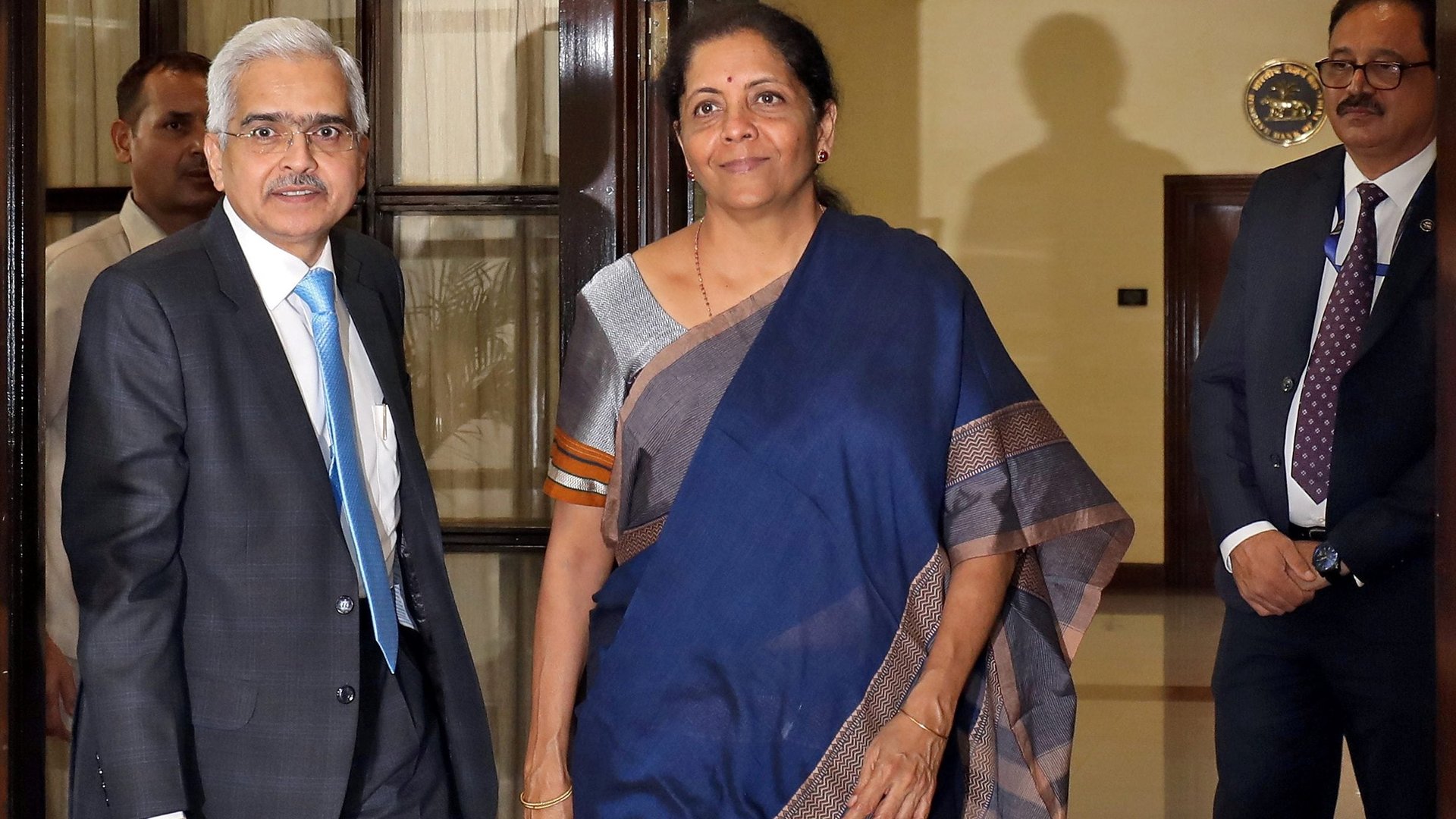

There are few issues more politically sensitive in India than inflation or rising prices. With frequent elections across the federal framework and the union government being seen as responsible for economic policy, ruling parties in India go to great lengths in order to keep prices in check.
Stubbornly high inflation rates in the final years of the Congress-led United Progressive Alliance (UPA) government, following the global economic crash, are often credited as being one of the key reasons why it was voted out in 2014.
For most of the last seven years, prime minister Narendra Modi’s government has done well on this front. But recent developments should have the Bharatiya Janata Party (BJP) worried.
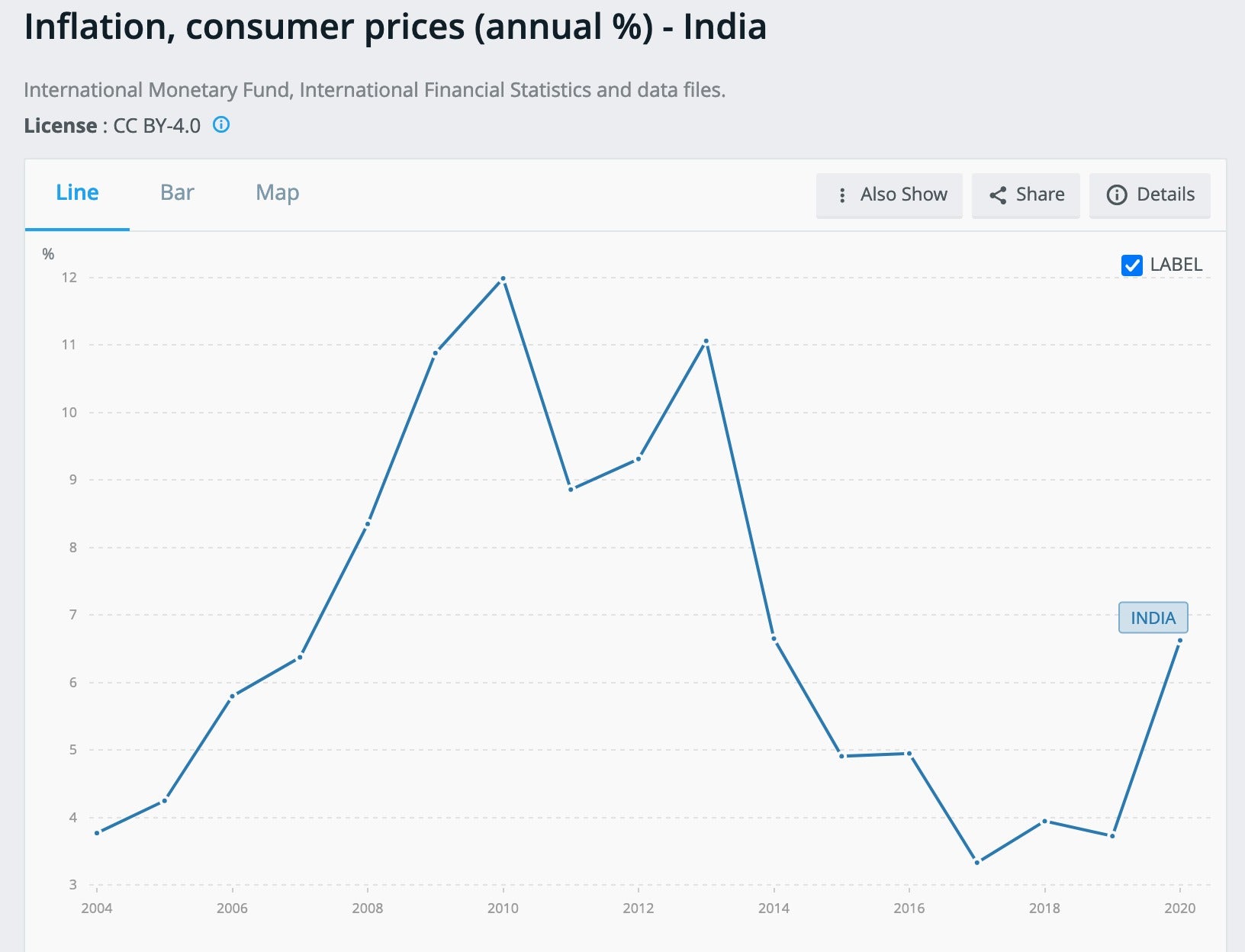
India’s inflation is shooting up of late
For May 2021, India’s retail rate of inflation, measured year-on-year, was 6.3%. Rural inflation (6.48%) was higher than urban (6.04%).
This was above the Reserve Bank of India’s (RBI) 6% upper threshold for inflation—the first time the limit was breached in six months.
The two main drivers for this was a massive spike in edible oil prices (30.84%) as well as an increase in fuel prices (11.58%). The price of pulses—a major part of India’s food basket – also rose by 9.39%.
May’s figures were part of a broader trend of rising inflation in India. Since January 2019, when retail inflation touched a low of 2.04%, scraping the RBI’s 2% bottom threshold, prices have steadily risen. By October 2020, inflation was 7.61%—the highest it has been in six and a half years. Even more worrying for the Modi government was that this was powered by food inflation. The Consumer Food Price Index showed an increase of 11.07% year-on-year.
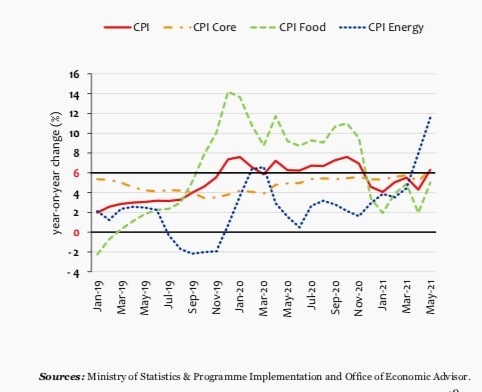
How did Modi contain inflation till this spike?
One of the reasons high inflation is making such an impact is that till now the Modi government has actually done a noteworthy job of managing price rise.
This is not by accident: inflation has been at the heart of Modi’s governance strategy.
In March, 2016, the Modi government amended the Reserve Bank of India Act to put in place inflation targeting regime for the central bank to follow. The RBI was to steer a monetary policy (which mainly involves controlling money supply via levers such as loan interest rates) that ensured that inflation was limited to 4% with a 2 percentage point band. In effect, this meant that the central bank’s job was to ensure inflation would remain between 2% to 6%.
As this National Institute of Public Finance and Policy paper (pdf) points out, the policy was a success with the Modi government taming the volatile inflation of the UPA years: the average inflation rate between October 2016 to March 2020 was 3.93%.
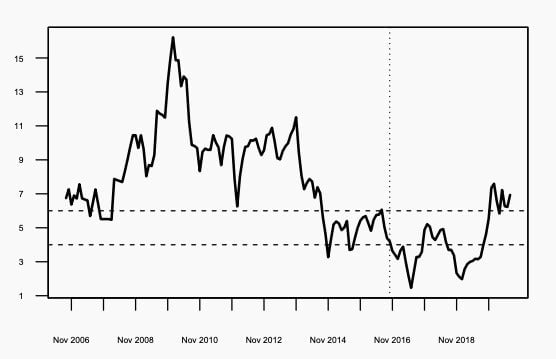
Happy Indian consumers but unhappy farmers
Like every government policy, low inflation has winners and losers. While consumers have benefited from low food prices by corollary, farmers—that is, the people who produce and sell food—have lost out.
To achieve low food prices, the Modi government has placed harsh market controls on agricultural produce. As economist Abhijeet Banerjee points out, this has meant farmers “paying for our inflation target” given that agricultural exports are often banned in order to reign in inflation.
Agricultural journalist Harish Damodaran points to the example of pulses of how an inflation-targetting regime ends up “violating every rule of free trade” when it comes to agriculture in order to push down food prices:
“In 2016-17, the country produced a record 22.95 mt of pulses, over and above imports of 6.61 mt. The fact that farmers were set to harvest a bumper crop was known since late-2016, when ruling market rates had already plunged below MSPs. Yet, stockholding limits were removed only in May 2017, while import restrictions on arhar, urad and moong, along with a 50% customs duty on white peas, came during August-November. The Modi government also freed exports of milled pulses in mid-September. But all this was well after the damage had been done.”
This is of course a tricky point politically, given agriculture is by far India’s largest employer.
Critics of the inflation targeting regime also argue that keeping loan interest rates high, slows down growth. In some cases, critics even blame the Indian economy’s current slowdown on inflation targeting. However, unlike the farmer income point, this is a contested argument and many economists also argue that it has done no harm when it comes to growth.
Why are Modi’s attempts at inflation control failing now?
Speaking to Scroll.in, Radhika Pandey, a fellow at NIPFP identifies four main reasons for the rise in inflation of late. “The most significant are supply-side disruptions due to the Covid-19 lockdown,” she said.
Given the dislocation of the lockdown, both manufacturing and supply chains have been hit, leading to fewer goods and therefore a rise in prices for those goods that do reach markets.
In its quarterly review of the economy released on June 25, the Delhi-based think tank National Council of Applied Economic Research pointed out that pandemic dislocation has meant core inflation (minus food and fuel) remains high.
To add to this there is an international dynamic. “There is an asynchronous recovery, with rich nations opening up and restarting their economies, which is leading to an increase in prices of crude and metals,” Pandey explained.
The third is the rise of prices of edible oils and pulses. “Since India imports both, international prices play a big part and the Indian government’s room for manoeuvre is limited,” she said.
The fourth is high fuel taxes pushing up the prices of oil. “The government is not inclined to reduce taxes on fuel given its own fragile fiscal situation,” Pandey explained.
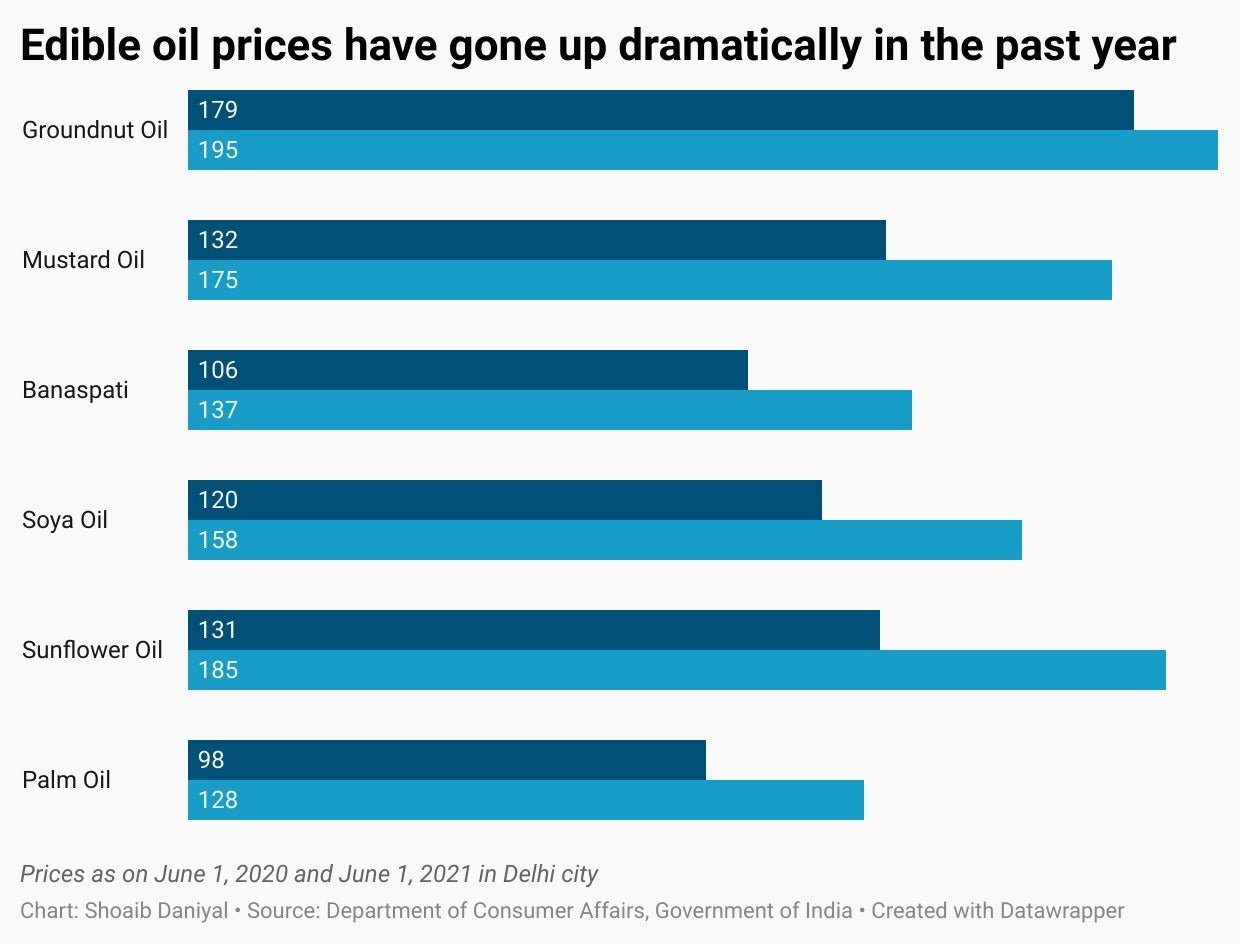
Given that none of these factors can be addressed using monetary policy, the RBI’s till-now successful inflation targeting frameworks is largely ineffective.
Instead, the onus falls on the Modi government—which has taken some steps to reduce prices. On July 3, it brought down the import duty on palm oil, India’s largest consumed edible oil. On the same day, it also imposed stock limits on pulses. A significant move given it reverses the liberalising logic of one of the farm laws passed in September 2020—the Essential Commodities (Amendment) Act, 2020—which allowed stock limits to be placed only in emergency circumstances such as war.
Notably, however, there has been no decrease when it comes to taxes and cesses on petrol and diesel given that other tax sources for the Union government—such as the Goods and Services Tax (GST)—have been lacklustre.
Political crisis for Modi
One of the biggest factors that led to the downfall of Manmohan Singh’s government was inflation. An average retail inflation rate of 10.4% across five years of the United Progressive Alliance-2 government led to sharp anti-incumbency when the 2014 Lok Sabha elections came around.
Modi, after coming to power, has learnt well from this lesson and worked hard at keeping inflation in check.
While this won in consumer approval, it also created farmer discontent given low food prices harmed producers. One outcome of this can be seen in the long protest by farmers from Punjab and Haryana on the borders of Delhi. While the proximate cause for the sit-in were the three farm laws passed in 2020 attempting to let the free market play a greater role in agriculture, falling farmer incomes created fertile ground for discontent.
However, in balance, the political impact of inflation targeting has been positive for Modi, with happy consumers voting in the government for a second term with a massive mandate in 2019. To keep these tailwinds going, Modi will need to again bring down inflation to rates, even in the face of disruptions like Covid-19.
This article was originally published on Scroll.in. We welcome your comments at [email protected].